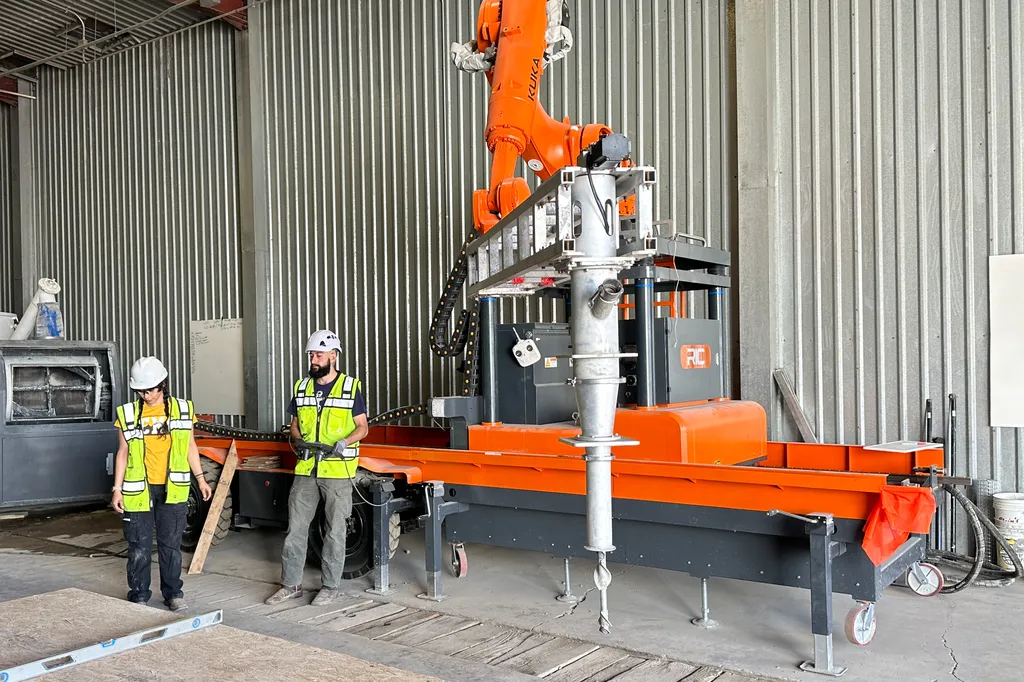In the rapidly evolving world of digital construction, ensuring the geometric accuracy of fabricated components is paramount. This is particularly true in the realm of 3D concrete printing, where the creation of complex structures is now a reality. A recent study led by M. Maboudi from the Institute of Geodesy and Photogrammetry at Technische Universität Braunschweig, Germany, delves into the effectiveness of different data capture techniques for geometric inspection in 3D concrete manufacturing. The research, published in ‘The International Archives of the Photogrammetry, Remote Sensing and Spatial Information Sciences’ (translated as ‘International Archives of Photogrammetry, Remote Sensing and Spatial Information Sciences’), offers valuable insights that could revolutionize quality control processes in the construction industry, including the energy sector.
The study focuses on three distinct approaches for quality inspection: Terrestrial Laser Scanning (TLS), Terrestrial Photogrammetry (TP), and hand-held Structured Light Scanning (SLS). These methods were employed to inspect two medium-sized digitally fabricated concrete components. The results were then compared using cloud-to-mesh (C2M) distances, with the Root Mean Square Error (RMSE) serving as a critical metric for accuracy.
“Our findings indicate that all three methods can achieve an RMSE of less than 1mm, which is well within the acceptable range for most digital construction applications,” Maboudi explained. This level of precision is crucial for ensuring that fabricated components conform to their designed models, thereby maintaining structural integrity and performance.
However, the study did not stop at mere accuracy. It also considered other practical parameters such as time, cost, and flexibility. “While TLS and TP have their merits, hand-held SLS emerged as the optimal choice for small to medium-sized objects,” Maboudi noted. The portability and ease of use of SLS make it particularly suitable for on-site inspections, where time and resource efficiency are paramount.
The implications of this research are far-reaching, especially for the energy sector. As the demand for sustainable and efficient energy solutions grows, so does the need for innovative construction techniques. 3D concrete printing offers a promising avenue for creating complex and durable structures, such as wind turbine foundations and nuclear power plant components. Accurate geometric inspection ensures that these structures meet the highest standards of quality and safety.
Moreover, the ability to update digital models based on inspection results can significantly enhance the precision and efficiency of subsequent production steps. This iterative process not only improves the overall quality of the final product but also reduces material waste and production costs.
As the construction industry continues to embrace digital technologies, the findings of this study provide a valuable roadmap for implementing effective quality control measures. By leveraging the right data capture techniques, construction professionals can ensure the reliability and accuracy of their fabricated components, paving the way for a more efficient and sustainable future.
In the words of Maboudi, “This research is just the beginning. As technology continues to evolve, we can expect even more sophisticated methods for geometric inspection, further enhancing the capabilities of digital construction.” The journey towards a more precise and efficient construction industry is well underway, and the insights from this study are a significant step in that direction.

